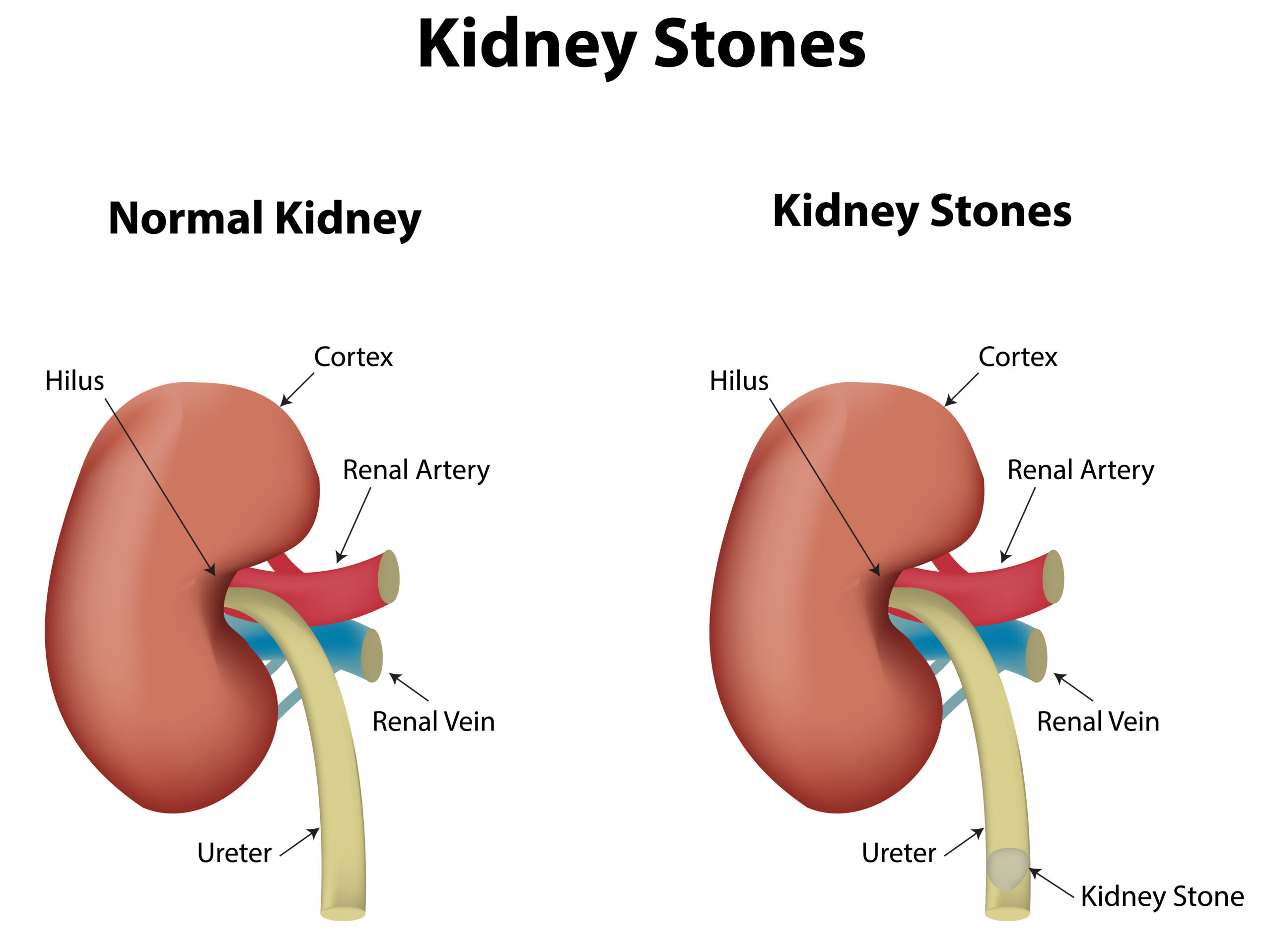Kidney Stone Treatment
What are Kidney Stones?
Anyone who has ever had a kidney stone knows just how painful they can be. Kidney stones are come in one of 3 types: calcium stones (the most common), struvite stones, and uric acid stones. When one of these minerals are deposited into the kidney and forms a stone, they become intensely painful when they start to move. They can occur anywhere in the renal system, including in the kidney, in the muscular tube connecting the kidney to the bladder called the ureter, or in the tube exiting the bladder to the outside called the urethra.

What are the Symptoms of Kidney Stones?
Most people will experience an intense pain in the back or, more commonly, in the flank area. It is typically left or right side, but not both. The pain is so intense most patients rate it at a 9 or 10 out of ten. Often times, patients can also experience nausea, vomiting, or blood in their urine. It is not uncommon for the pain to radiate from the back or flank to the groin area on the same side.
How are Kidney Stones Diagnosed?
With a history of symptoms and location of pain consistent with a kidney stone, one of our medical providers will start with a urinalysis. Since 90% of all kidney stones present with either macroscopically (visible to the naked eye) or microscopically (requiring a urinalysis to detect), a kidney stone can be diagnosed with a simple urinalysis and an x-ray. Occasionally, if the diagnosis is unclear, a CT scan of the kidneys may be used to aid in the diagnosis.
What are the Treatment Options for Kidney Stones?
If you think you are experiencing symptoms consistent with a kidney stone, please let one of the medical
providers at Pinnacle Urgent Care evaluate you. Often, the symptoms of a small (10 mm or less) stone can be treated with the following:
- Increased hydration
- Pain medications, including anti-inflammatories and narcotic pain medications
- Tamsulosin (Flomax), which is a medicine that will aid you in passing the stone
- Nausea medication if necessary (Zofran)
When stones become larger than 10 mm, a procedure called lithotripsy may be required to break up
the stone. If one of our providers suspects this may be necessary, he or she will refer you to a urologist.
In rare occasions, a large stone (bigger than 2.5 cm) may require surgical removal.
When Should You See a Doctor for Kidney Stones?
If you are experiencing intense, one-sided back or flank pain, please come in and let one of our providers
treat you.

To Make An Appointment
To Make An Appointment
or call (336) 565-5001
or call (336) 565-5001
OPEN: Mon-Fri, 8a-8p / Sat-Sun: 8a-5p
OPEN: Mon-Fri, 8a-8p / Sat-Sun: 8a-5p
